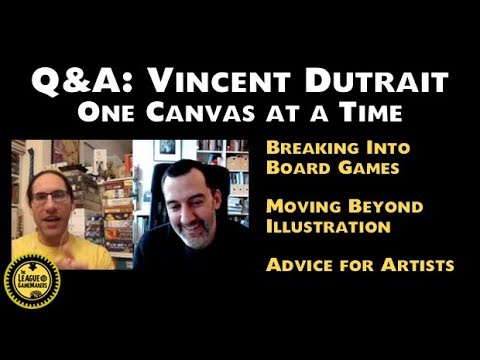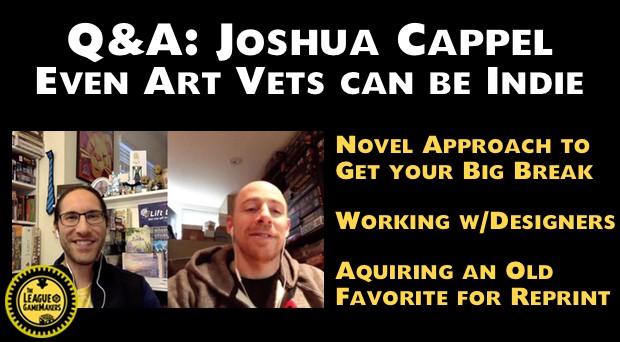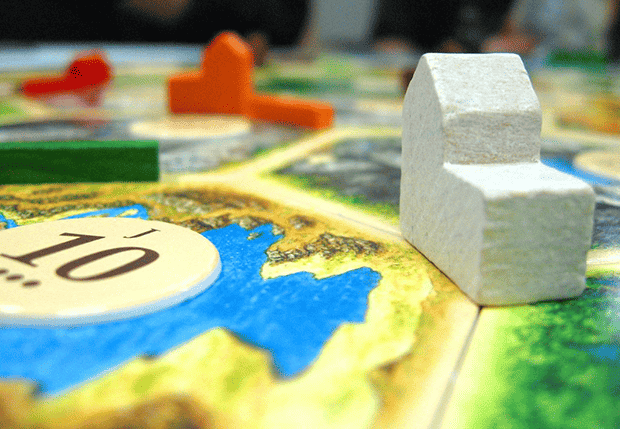
A guest post by Anthony Rando and Eric Cesare of Devious Devices, LLC
VERI-WHAT?
We here at Devious Devices have been fondly throwing around the term “verisimilitude” quite a bit lately, particularly in regard to our most recent game, Bad Roommate. But we’ll get to that—first we’ll explain what this big word is and how it relates to game design.

Verisimilitude, in a nutshell, means giving something the attribute of appearing real or truthful. In terms of game design, it’s creating your world in such a way that people can readily believe that your design choices are natural, and as an effect of that, will allow them to immerse themselves more fully into your game. (If you are a Magic fan, you may know this concept as card flavor or top-down design)
Most people are familiar with the concept of suspension of disbelief—i.e., “I’m a mage, so it’s perfectly natural for me to occasionally shoot fireballs from my fingertips.” Without verisimilitude, disbelief could not be suspended, and we’d find ourselves all acting like that guy who loves to proclaim, “That would never happen in real life!”
No duh, Captain Obvious. That’s the point — fiction isn’t supposed to simulate real life, or else it would be just as boring, but we have to believe that it could happen.
At this point we’d like to pause for a moment and stress how difficult “verisimilitude” is to type repeatedly (and to say—go ahead, say it out loud. We’ll wait). So from this point forward, we’ll be referring to it as VST, as we’re wont to do when we’re talking heatedly on the subject in our meetings.
VST VS. REALISM
VST is not the same as realism. If a game were realistic, we’d be rolling a d6 to determine how soon our character will need to find a bathroom. Gaming is fun because it’s not real life—it’s escapism.
We’re not pirates, starship captains, or apocalypse survivors.
We’re accountants, waiters, and game designers.
WE PLAY GAMES TO TAKE ON THOSE IMAGINARY ROLES.
Essentially, adding VST is simply creating something within the game world that is relatable to the real world. If players can relate on some level, or are given a reference point to something they already know is possible, they’ll be that more apt to really get into the game.
Now, if those same aliens were the size of chickens, but had the strength of fifty men, that would likely make it more difficult to get behind the idea, or might be a trait that players find themselves forgetting about as they play since it doesn’t seem natural.
VST ON THE TABLETOP
We’d be hard-pressed to think of any game that is entirely realistic, but like we said, real life is boring – that’s why we play games!
Employing VST is a valuable tactic to help your game convey your theme, regardless of genre. Take Settlers of Catan for example; Despite the fact that the game takes place in a fictional land during an entirely different era, the gameplay is rife with VST. You collect resources and build roads and settlements over varying terrains. Catan is experiencing a colonial revolution; these are things we understand to be not only possible, but to have actually happened.
If Catan were realistic rather than employing VST, there would likely be a mechanic to figure out how many protesters are chaining themselves to trees to keep you from gathering timber and turning Catan into a barren wasteland. At the very least, we’d have to wait for our sheep to regrow their wool or for crops to reach maturity before we could reap their rewards again, instead of merely rolling a 6. And that’s just not as fun.

On the other hand if you look at the game’s collection mechanic from a different angle, you can view the VST of random dice rolls to represent time elapsed, perhaps in months. Leaving this to the imagination neither breaks nor makes the realism of the game, but not mentioning this makes it that much easier to explain the process of determining who gets what and when.
INJECTING VST
So how might you use your newfound tool? Here are a handful of examples to consider when employing VST in game design:
MECHANICS
There are about a million different game mechanics out there, and new ones are being developed all the time. The mechanics of a game can really add some VST to the experience and can even be used to explain the thought behind the action.
We recently got to play What the Food?! (by League member Peter Vaughan) for the first time, and it possesses a great example of a mechanic that employs VST. The game simulates a cafeteria food fight by each player first targeting another, then all revealing the actions they’re taking at the same time, and going in a varying turn order to see who ducks out of the way or who gets hit with a soggy turkey leg.
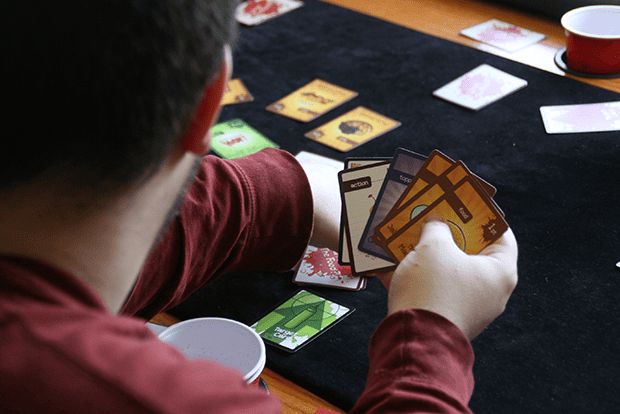
A realistic version of this game might be complete chaos with cards flying across the room and players overturning tables as shields, but by simultaneously picking actions, it simulates the blink-of-an-eye action of a real food fight where you may not have time to react!
BALANCING
Personally, we think that balancing a game is one of the biggest pains in game development, since it usually comes into play after you think you’re done designing. Then playtesting comes along and you discover a neverending stream of things that need to be adjusted.
Here’s an example of using balance to implement VST. For our newest game, Bad Roommate, players try to drive their awful roommates insane, forcing them to move out of their shared apartment by playing Scheme cards against each other. One roommate may play a very simple scheme, called “Borrow a sweater.” They stretch out the sweater with their big fat head and this drives a roommate crazy — just a little bit.
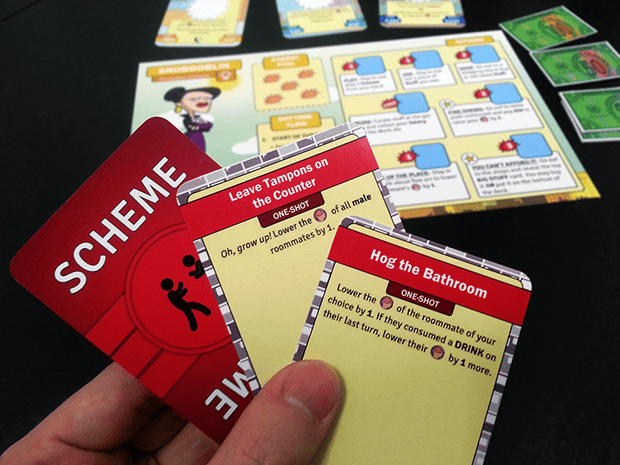
Another Scheme, called “Borrow the Car,” results in a roommate destroying another roommate’s vehicle. Naturally that’s going to make them quite a bit more crazy than just ruining a lousy sweater. The ratio of sanity removed for a given action versus the total sanity loss allowed adds an aspect of VST that makes it all the more believable.
When designing characters for your classic fantasy game, you might create a very large, strong brute burdened with a lot of muscle. Chances are he’s not quite as fast as a lean, long-legged rogue, so when he moves across the board, he moves fewer spaces to add VST. Or, if a character was carrying a lot of stuff, that might degrade his movement score too because of encumbrance.
There are tons of other examples we could mention here; these are just a few to consider.
ART & GRAPHIC DESIGN
This is a pretty easy notion here. A game’s art, however simple it might be, adds imagery to the gameplay, thereby increasing the immersion into it. We’ll once again use the reptilian alien example from before; now with the art, we can see what it looks like, and it adds to what we already know about the alien.
Other games use their graphic design choices to help steer gameplay through VST. One example might be the tunnels you dig through Euphoria to connect to a neighboring faction’s resources, or a personal favorite, recent discovery — the player boards that look like desks in Hansa Teutonica. Brilliant.

Designing the appearance of your components with VST in mind can often guide players to choosing their actions organically or tell them exactly what something does, just by looking at it.
THE RIGHT BALANCE
As with most design decisions, it’s all about having a good balance.
Too much VST can add clunkiness and slow the pace of a game down to a crawl. Conversely, having too little VST might break immersion and cause potential issues with grasping the mechanical concepts of a game.
In Bad Roommate, we considered VST pretty heavily when designing the roommates’ personalities and creating schemes for them to hatch, since the game is rooted in the “real world,” but we didn’t want the gameplay to be bogged down by too many rules or steps. Our original goal with this game was, and is, to simulate a day in the life of these roommates on every turn as much as possible.
However, we discovered through playtesting our first prototype that too much flavor–a side-effect of our quest to inject as much VST as possible–was causing analysis paralysis in players and affecting the overall quality of the game.
With the next round of edits, we made sure to remember our original goal: Roommates have jobs and collect a salary, and they use the money to buy stuff (or sometimes, to steal it from one another). They go out of their way to drive each other crazy and force the others to move out.
We basically had to remind ourselves that there won’t be any bathroom-break dice-rolling in Bad Roommate, any more than we’d expect the next expansion to King of Tokyo to include a counter for how many people you smush underfoot every time your monster takes a step (which is probably a lot).
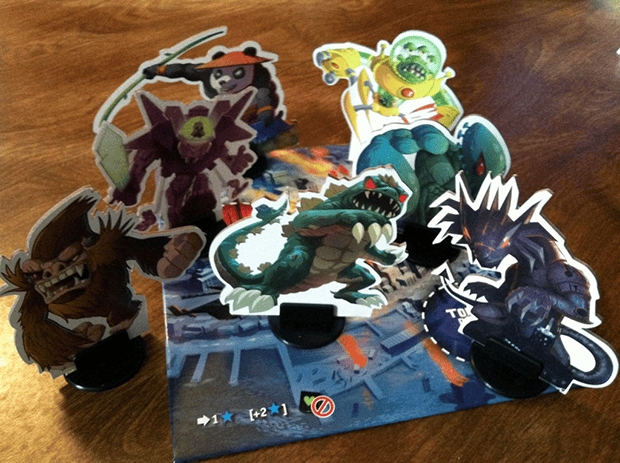
Implementing the right amount of VST when designing your game can help with anything from the explanation of rules, concepts and mechanics to creating fun, excitement and immersion for your players.
So the next time you are playtesting a game and notice a mechanic that adds some good verisimilitude, make sure you comment:
“HEY MAN, NICE VST YOU GOT THERE.”
———————————————————————————————–
Anthony and Eric are the designers of the recently Kickstartered, morally-bankrupt card game Epic Picnic, which will be available for sale soon on Amazon. They founded their company Devious Devices in 2013 with the intent of making games that are “Easy to learn and fun to master.” Their next game, Bad Roommate is currently in development — you can stay up to date on all their shenanigans at www.DeviousDevices.net

